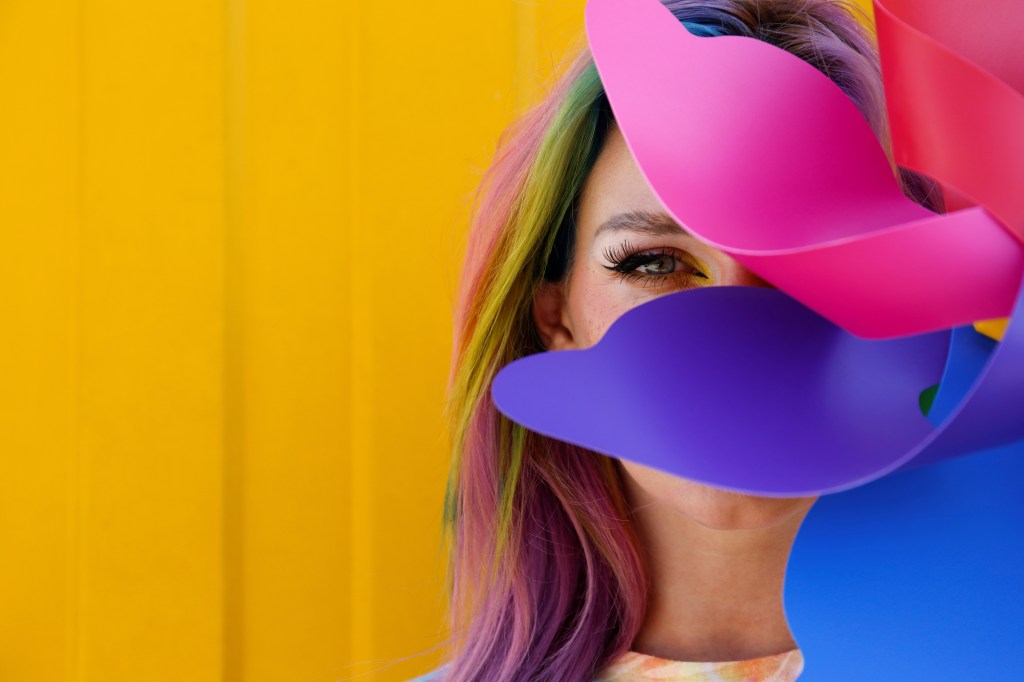‘Free-from’ at the forefront
The clean beauty movement began with a consumer focus on products that were free from harmful ingredients. Manufacturers began cleaning up their products by removing perceived harmful ingredients—particularly parabens, sulfates, and phthalates.
The efforts have paid off, as over half of the beauty and personal care products being sold in the U.S. are currently paraben-free, with the growth rate continuing to outpace the total category (+3.6% vs +2.0%).
NielsenIQ defines truly clean beauty products as those that are free from all the following: parabens, sulfates, phthalates, artificial colors and fragrances, plus 600 other ingredients. These truly clean products have reached over $400 million in sales and show even higher growth rates compared to the total category (+8.1% vs +2.0%).
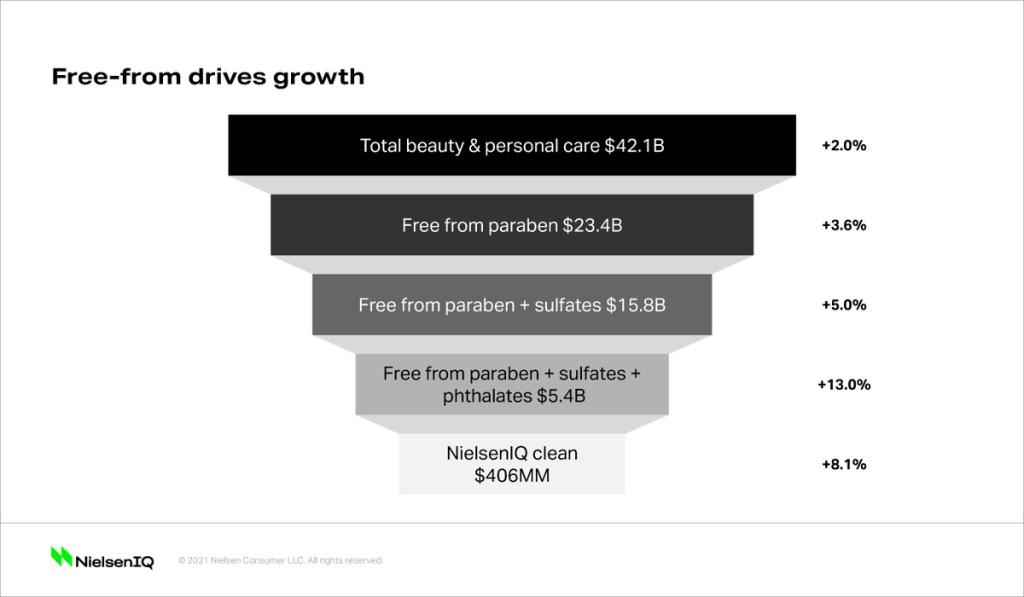
Beauty’s sustainability shift
While the focus has been on “free-from” beauty, we are starting to see a shift to a higher consumer focus on sustainability. Sales for beauty and personal care products that have environmental benefits, such as vegan, cruelty-free, reusable packaging, and plastic-free are seeing elevated growth rates over those that just have clean ingredients.
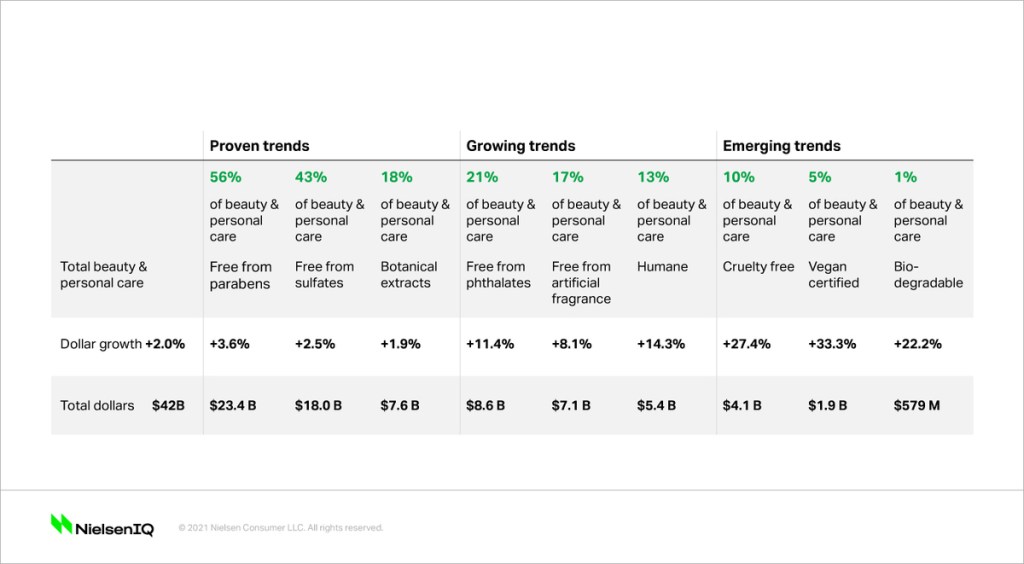
Consumers are becoming increasingly invested in sustainable beauty trends and tell us that the most important attributes they look for when shopping for beauty and personal care products are those that use natural ingredients (40.2%), respect the environment (17.6%), and use reusable and recyclable packaging, at 7.9% and 15.8%, respectively.
Younger consumers in particular tend to be the most interested in sustainable products, with Gen Z consumers 1.3 times more likely to want to try environmentally friendly products.
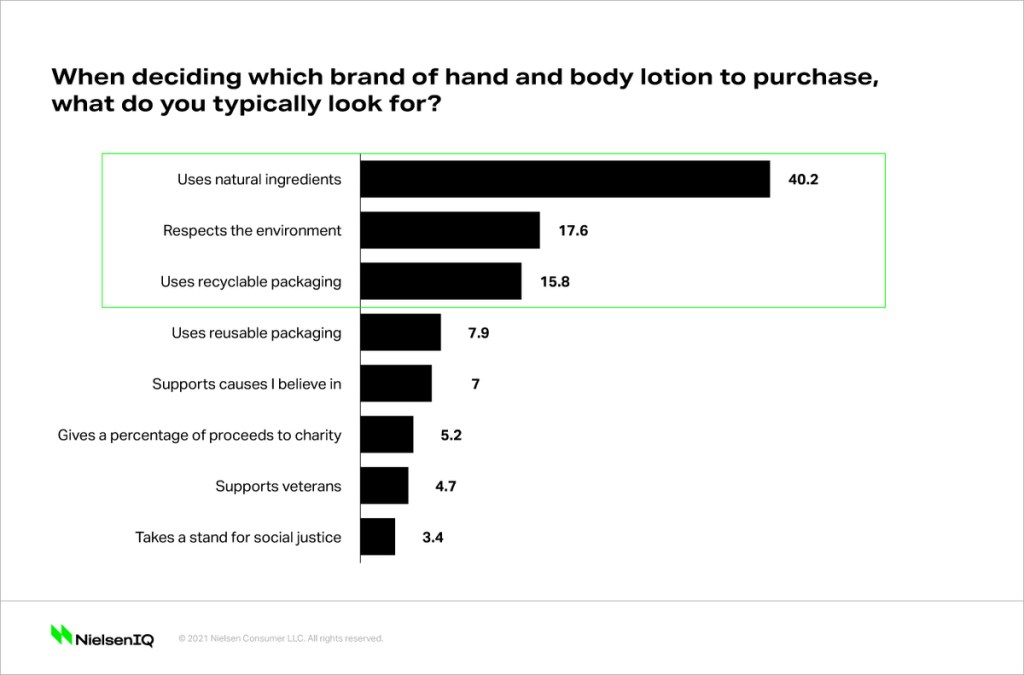

Uncover the truth behind the latest beauty insights
Find out how you can better understand evolving consumer interest in clean, sustainable, and cross-channel shopping habits within the beauty category—for today and tomorrow.
Beauty trends over the horizon
Looking ahead to what shoppers are searching for when looking for beauty products provides a sneak-peek into what will be trending in the future of clean beauty. We see a strong trend toward sustainability reflected in online search terms, which have been skyrocketing in popularity of late.
Plastic-free has also been driving the conversation and has shown quarter-over-quarter gains during the past year, as shoppers look for products that produce less environmental waste. Also top of mind with many consumers are reef-safe and refillable options.
Meanwhile, terms that represent the “free-from” movement, such as paraben-free (-7%), sulfate-free (-6%), and fragrance-free (-21%) have all been declining slightly in popularity.
Despite this drop in consumer searches, sales for products featuring these attributes remain strong and continue to be growth drivers, as previously indicated. Consumers have come to expect their products to be free from harmful ingredients, and the decline in searches can be interpreted more as the expectation being met, rather than a lack of consumer interest in the topic.
As search terms tend to represent what is top of mind for consumers, we can interpret this trend as a signal that sustainability claims will become more relevant in the future of clean beauty products.
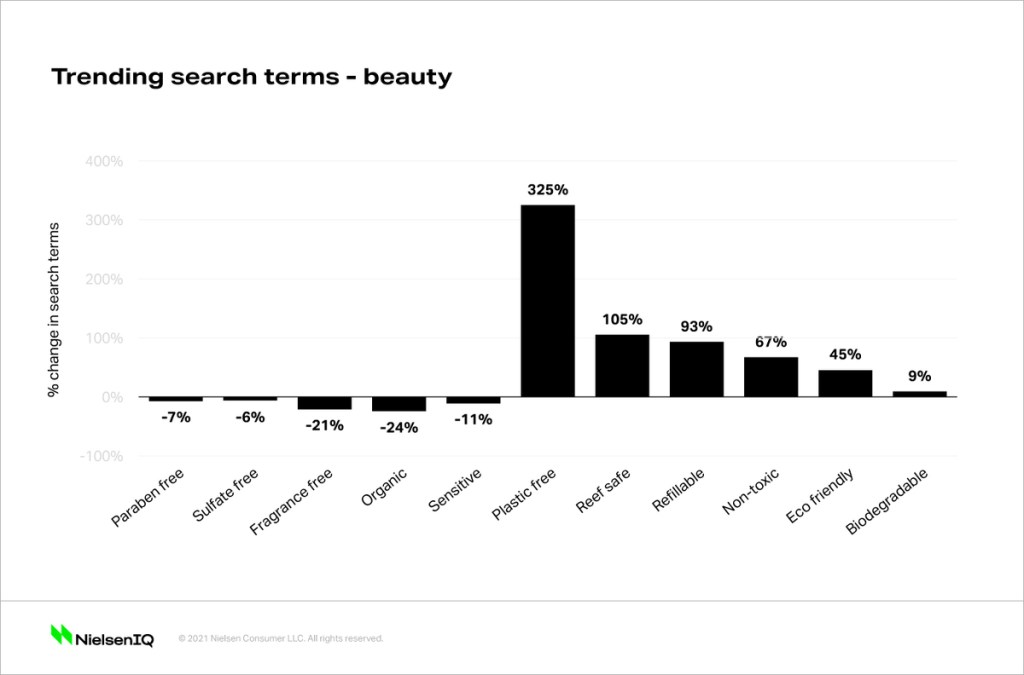
Retailers on the clean scene
Several retailers are taking leading roles to propel this trend as well. Sephora recently updated its clean beauty badge to the more stringent “clean + planet positive,” which reflects sustainability attributes as well as clean ingredients.
Others making waves in this space include Ulta, which in March embarked on a partnership with Loop as part of its Conscious Beauty initiative. The Ulta/Loop alliance provides the 1,250-store beauty retailer’s customers easy access to beauty and personal care products from leading brands in durable, returnable packaging. The products are delivered in zero-waste packaging that is cleaned and refilled for repeated reuse.
Both Target and Amazon have introduced badges to help shoppers easily spot clean and sustainable beauty and personal products. Amazon’s climate-friendly pledge badge is awarded for beauty products with a lower carbon footprint.
Target has added bright green “Target Clean” badges on roughly 4,000 products to signify products formulated without propyl-parabens, butyl-parabens, phthalates, formaldehyde, formaldehyde-donors, nonylphenol ethoxylates (NPEs), oxybenzone, SLES, retinyl palmitate, hydroquinone, triclosan, triclocarban, BHA, and BHT. Target Clean also applies the green seal to aluminum-free deodorants and oral care products do not contain artificial sweeteners.
The beauty innovations of the future will move beyond clean ingredients to truly start tackling the problems of sustainability and waste. We have already seen many new innovations focused on reducing packaging and waste, such as water-free shampoos, refillable body lotions, and deodorant in biodegradable paper packaging. The future looks bright for the clean beauty movement, both for consumers and the planet.



